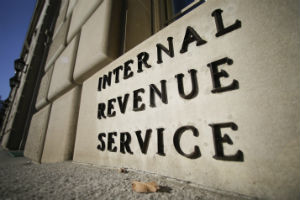 The IRS today renewed its effort to encourage taxpayers to review their tax withholding using the IRS Withholding Calculator and make any needed adjustments early in 2019.
The IRS today renewed its effort to encourage taxpayers to review their tax withholding using the IRS Withholding Calculator and make any needed adjustments early in 2019.
Doing a Paycheck Checkup can help taxpayers avoid having too little or too much tax withheld from their paychecks. The IRS reminds taxpayers that they can generally control the size of their refund by adjusting their tax withholding.
Withholding
The federal income tax is a pay-as-you-go tax. Taxpayers pay the tax as they earn or receive income during the year. Employers generally use withholding tables to determine how much tax to withhold from their employees’ paychecks and then pay it to the IRS. Workers who are not subject to withholding, such as those working in the gig or shared economy, should make quarterly estimated tax payments to pay their tax during the year.
When to Check Withholding
Taxpayers should check their withholding each year and when life changes occur, such as marriage, childbirth, adoption or buying a home.
For 2019, it’s important to review withholding and do a Paycheck Checkup. This is especially true for taxpayers who adjusted their withholding in 2018 – specifically in the middle or later parts of the year. And it’s also important for taxpayers who received a tax bill when they filed this year or want to adjust the size of their refund for next year.
A withholding table shows payroll service providers and employers how much tax to withhold from employee paychecks, given each employee’s wages, marital status, and the number of withholding allowances they claim.
The IRS makes annual updates to the withholding tables for inflation, tax rates, tax tables and cost of living adjustments. This annual withholding guidance helps employers make changes to their payroll systems. However, the withholding tables can’t fully factor in all changes for all taxpayers, and only employees know other variables that can affect the tax they owe, such as other household income, credits and deductions that might reduce tax. As a result, some taxpayers could have paid too much tax last year and will get a refund, or too little tax if they did not increase their withholding or pay more estimated tax in 2018.
IRS Withholding Calculator
The IRS Withholding Calculator can help taxpayers get their tax withholding right. Checking withholding can protect against having too little tax withheld and then facing an unexpected tax bill or penalty at tax time next year. A taxpayer may prefer to have less tax withheld upfront and receive more in their paycheck. And, some people may choose to have their employer withhold more money from their paycheck. Others may choose to make higher or more tax payments than required and receive the over payment – or refund – when they file their tax return. This is an individual taxpayer choice.
When using the calculator, it’s helpful to have a completed 2018 tax return available. For more details see Tax withholding: How to get it right.
Change Withholding by Submitting a New Form W-4
Taxpayers can use the results from the IRS Withholding Calculator to determine if they should complete a new Form W-4, Employee’s Withholding Allowance Certificate. The calculator will recommend the number of allowances to claim on this form and, if needed, the amount of additional federal income tax to have withheld each pay period. Employees submit the completed Form W-4 to their employer, not the IRS.
Those who need to adjust their withholding should do so as soon as possible. Workers whose income is not subject to tax withholding should also plan to pay tax throughout the year. See Form 1040-ES to find out more.
Tax Cuts and Jobs Act
When taxpayers file their 2018 tax return, they may notice significant changes from the Tax Cuts and Jobs Act (TCJA) including lowered tax rates, increased standard deductions, suspension of personal exemptions, increased Child Tax Credit and limited or discontinued deductions.
The IRS has online resources that can help taxpayers understand how the TCJA affects them and their withholding.
– Reposted with permission from NJCPA –
